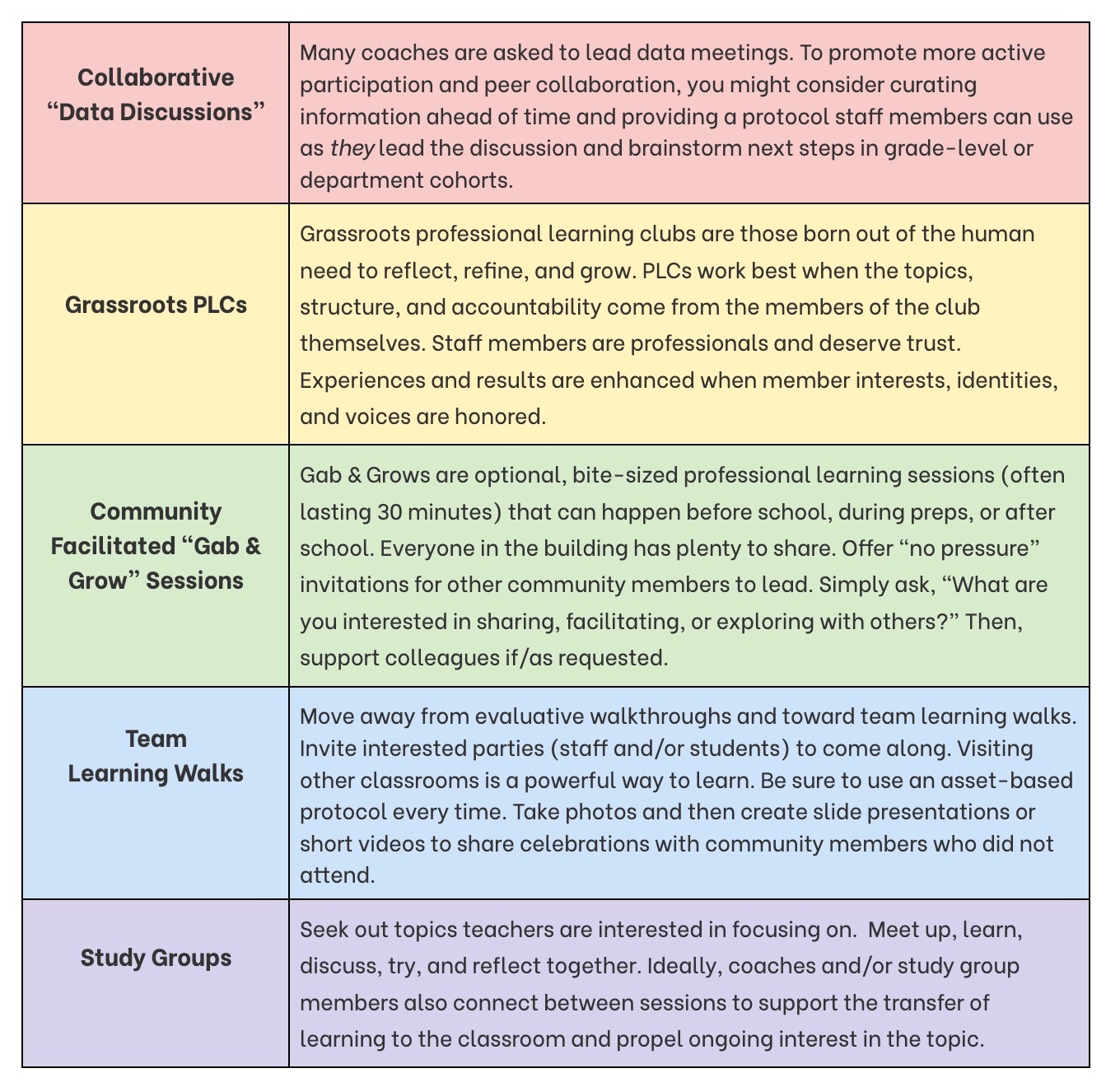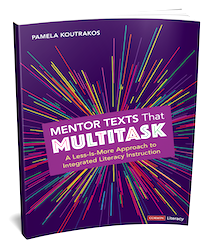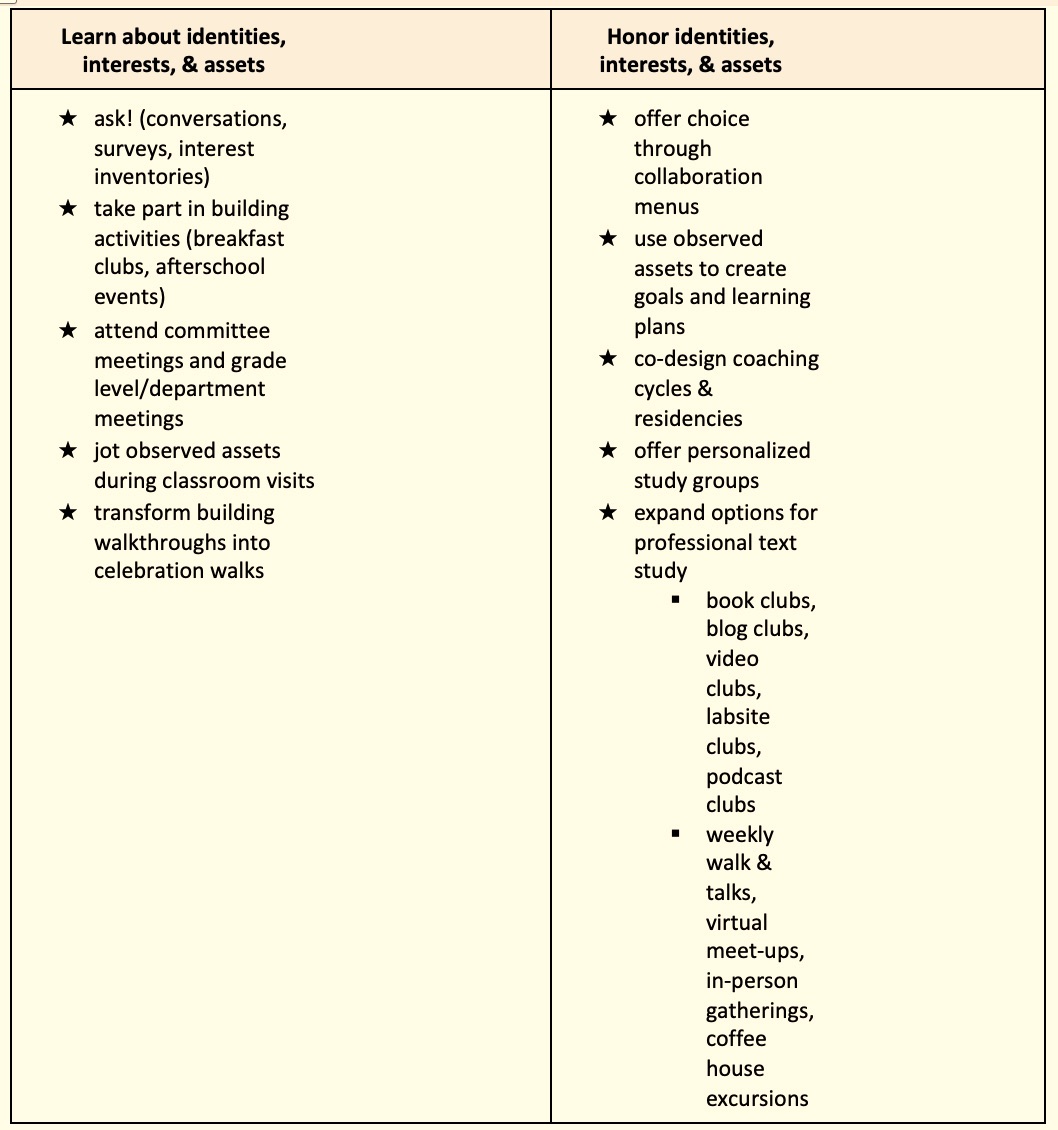Community-Centered Instructional Coaching
By Pam Koutrakos

But over the years I have come to understand that this approach is not enough. Through my experiences working alongside respected colleagues with titles ranging from classroom teacher to paraprofessional to specialist to administrator, it has become clear that a human-centered approach (that includes and targets the wants, needs, and success of everyone in the school community) is the way to go.
In our schools today, our interdependence has never been more clear or necessary. What follows are three questions I ask myself to assess whether my daily coaching practices center both students and staff.
How could I recognize and celebrate what these individuals are already offering?
An asset-based approach to teaching is widely accepted as valid and necessary. This means looking for what students can do and prioritizing next steps based on these strengths. This mindset is also essential when collaborating with adults.
When coaches use an asset-based approach to working with colleagues, it honors the idea that every team member is valuable and has expertise that enhances the community.
Colleagues do not need to be “fixed” or “developed.” Staff members have unique interests, multifaceted identities, and varied learning goals. Coaches need to use this information to shape positive and productive learning experiences that feel relevant and personalized. If the topics and processes for professional learning grow from these gifts, the entire community will benefit.
Is this connected to the community’s current goals?
A lot has been said about self-care and its impact on individual and community health. However, many educators feel there is insufficient time and space to practice self-care when there is a ton of “new” surrounding them.
New – even when it is worthwhile – can sometimes just feel like more. That is not good for anyone in the school community! This is why priorities are essential.
While “everything” may not feasible, we can choose to work toward a small set of important priorities. A coach can show respect for the entire community’s well-being by keeping the focus on this set of goals.
Here are some ways a coach can connect day-to-day work back to community goals:
- Create a (district, building, grade level, or department) learning plan based on current assets and next step goals. Consider how all of your work could become a bridge to these prioritized goals. Then use “backward design” methods to map out how different facets of professional learning all connect to those priorities.
- Advocate for balance. If necessary, be a broken record. For me, that often means speaking up in meetings with the administrators and saying, “Which community goal is this connected to?” or “Perhaps we could write that down as a possible priority for next year?” I’ve also regularly said something along the lines of “I am concerned that this new initiative is too much to ask of the community right now.”
- When working with individuals or small groups, creatively weave together personal goals with pre-set community goals, creating synergy – not stress.
When and where can other community members take the lead?
One-way relationships rarely thrive. Communities are healthiest when everyone has the chance to contribute. Instructional coaches don’t hold all the knowledge or answers. Perhaps one of the most important aspects of a coach’s job is to build networks and increase connectivity within a school and across the district.
The chart below includes a few ways to invite community members to take a leading role.

As you look ahead to next year, begin to think about community learning. Consider how team members might delve into prioritized topics, actively explore ideas, joyfully engage in conversations with each other, and contribute to the overall health and well-being of the school.
Rebuild and redefine professional relationships and collaborations that work in service of everyone in the school community.



































